In this article, we will review the 10 most used Linux distributions based on the huge availability of software, ease of installation and use, and community support on web forums.
That said, here’s the list of the top 10 distributions of all time, in descending order.
10. Arch Linux
Arch Linux stands out in the Linux ecosystem because it is not based on any other distribution and yet it is well-known and extensively used by the community.
Traditionally, Arch is not recommended for new users mostly because the installation process is a bit complicated in that it will require a great deal of intervention on the user’s part.
This requires a certain degree of knowledge about partitions, LVM, and Linux in general to have a successful installation. The good news is that this is precisely what gives the user the freedom to customize the system to his or her taste.
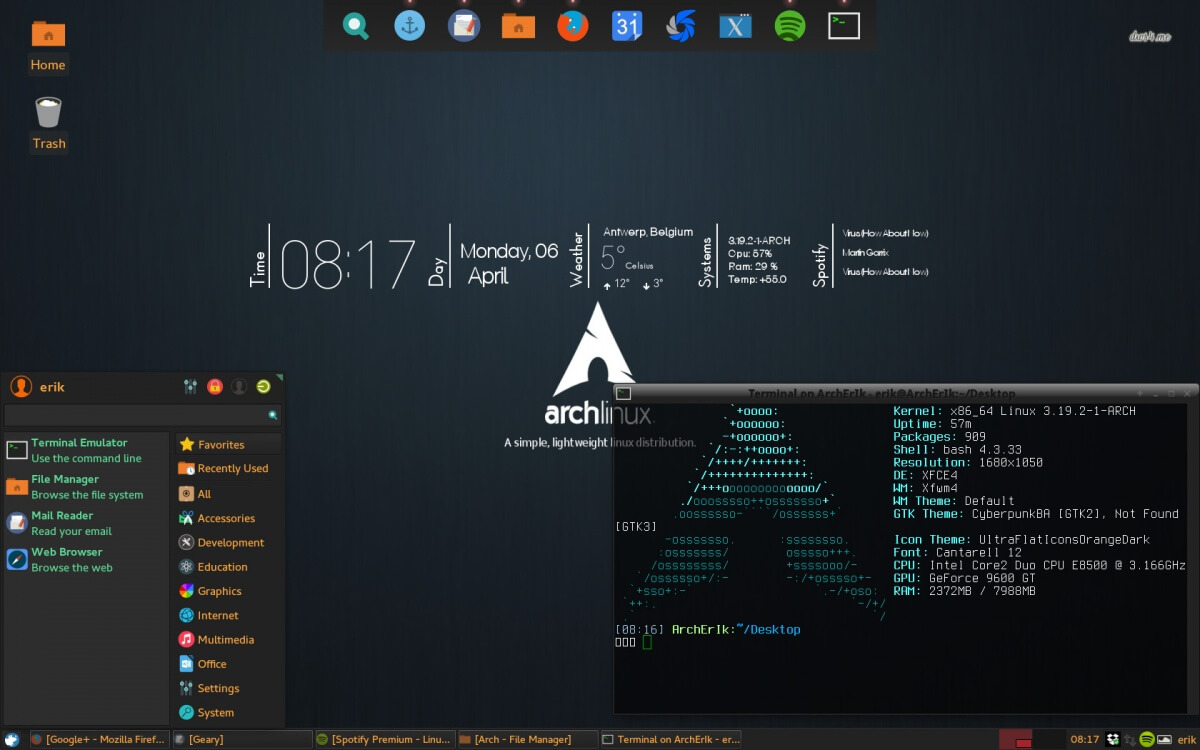
9. RHEL
RHEL (Red Hat Enterprise Linux) is best known and most used as a distribution for Linux servers, its desktop version is not as popular but continues to improve its visual appearance year after year.
RHEL has become a go-to choice for businesses and organizations due to its stable and well-supported environment, making it suitable for a wide range of applications.
RHEL’s success is attributed to its robust features, timely updates, and comprehensive support from Red Hat, the company behind its development.
As a result, many enterprises rely on RHEL to power their servers and infrastructure, ensuring smooth and efficient operations. With a user-friendly interface and a focus on stability, RHEL continues to be a trusted and widely used Linux distribution in the ever-evolving landscape of open-source operating systems.
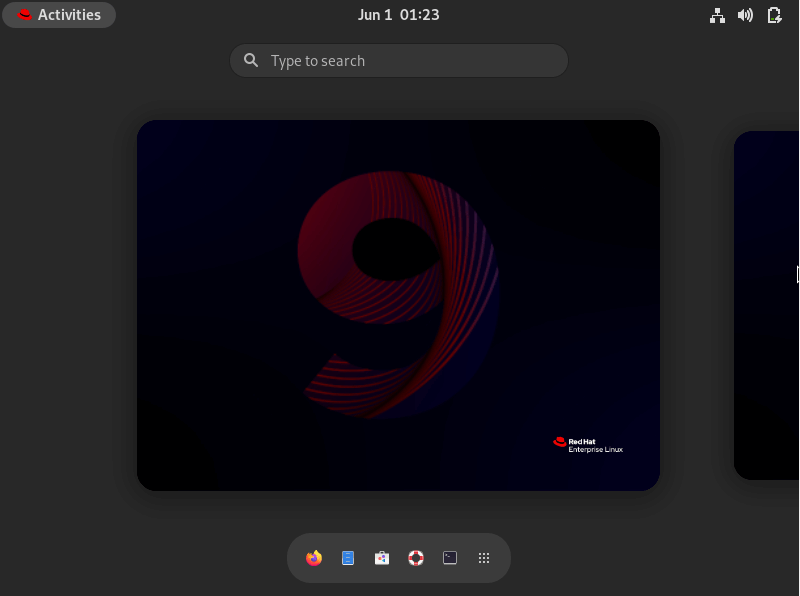
8. Elementary
Another Linux distribution aimed at Microsoft and Apple users, Elementary (or more appropriately Elementary OS), is also based on Ubuntu.
It was first made available in 2011 and is currently on its seventh stable release (codename “Horus“, which was released last year) and is based on Ubuntu 22.04.
On a personal note, this is one of the best-looking desktop distributions I’ve ever seen. Elementary’s well-polished visual appearance is certainly one of its distinguishing features.
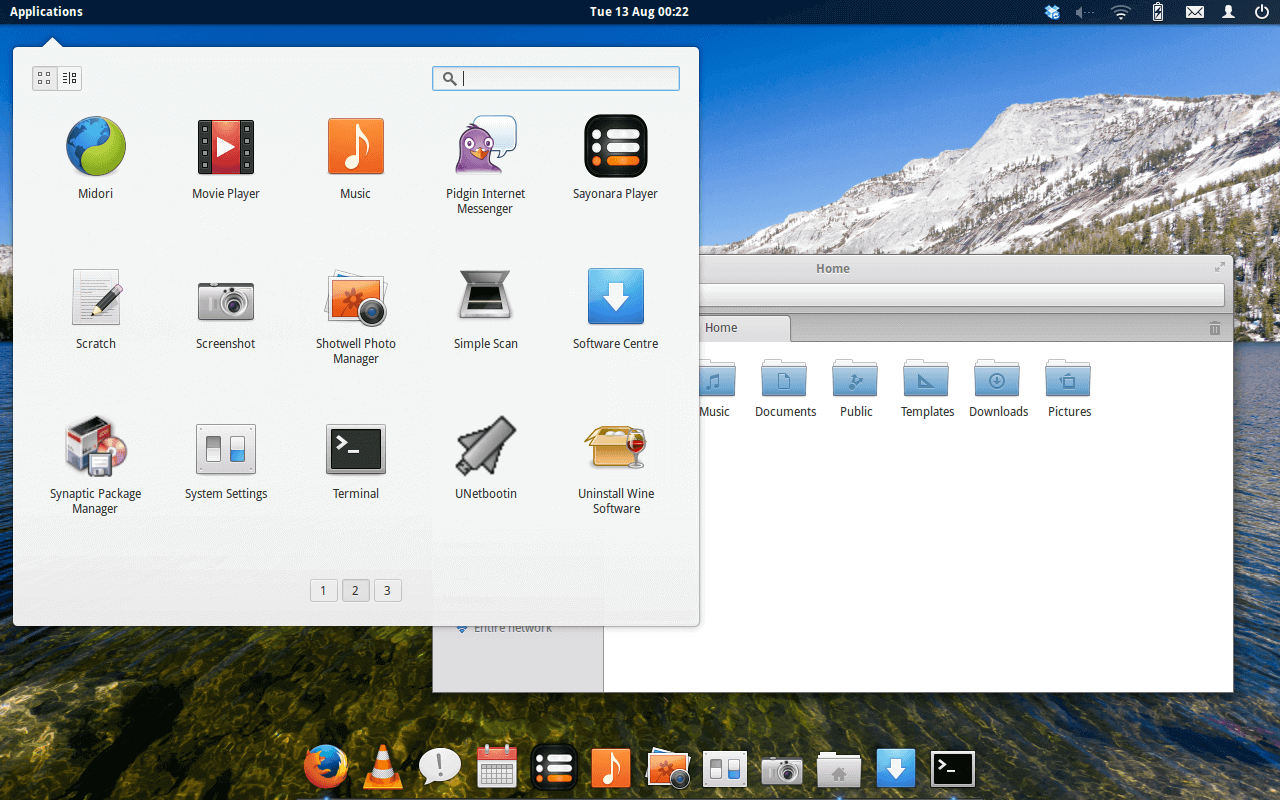
7. Zorin
After making it to the list of top Linux distributions, we can say that Zorin rose from the ashes this year.
This Ubuntu-based distribution was born and is currently maintained in Ireland. In order to appeal to Windows users, it has a Windows-like GUI and many programs similar to those found in Windows.
The main goal of this distribution is to provide a free operating system similar to Windows while allowing Windows users to enjoy Linux without issues. Zorin 17 was released last year.
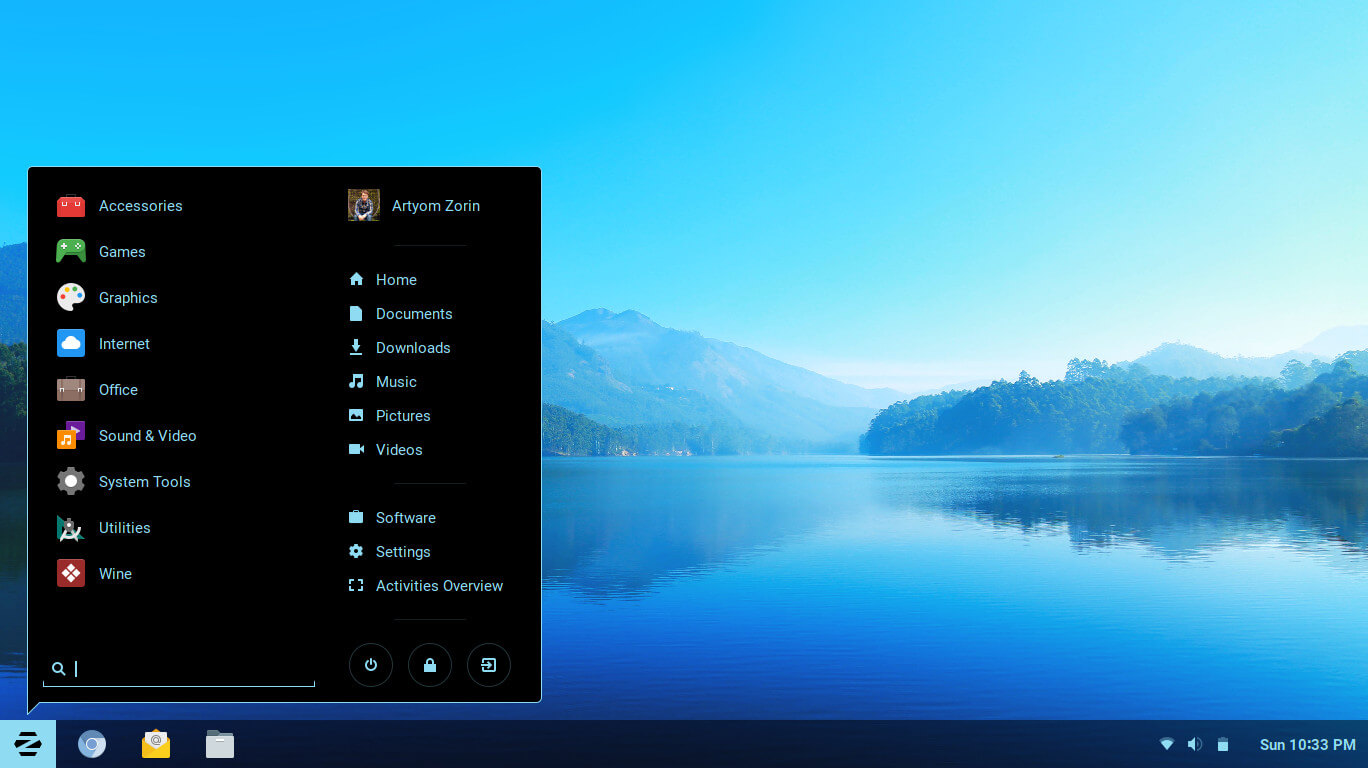
6. Fedora
Fedora is built and maintained by the Fedora Project (and sponsored by Red Hat, Inc.).
The most distinguishing characteristic of Fedora is that it’s always in the lead of integrating new package versions and technologies into the distribution.
In other words, if you want the latest and greatest FOSS software, Fedora is one of the first places where you should look.
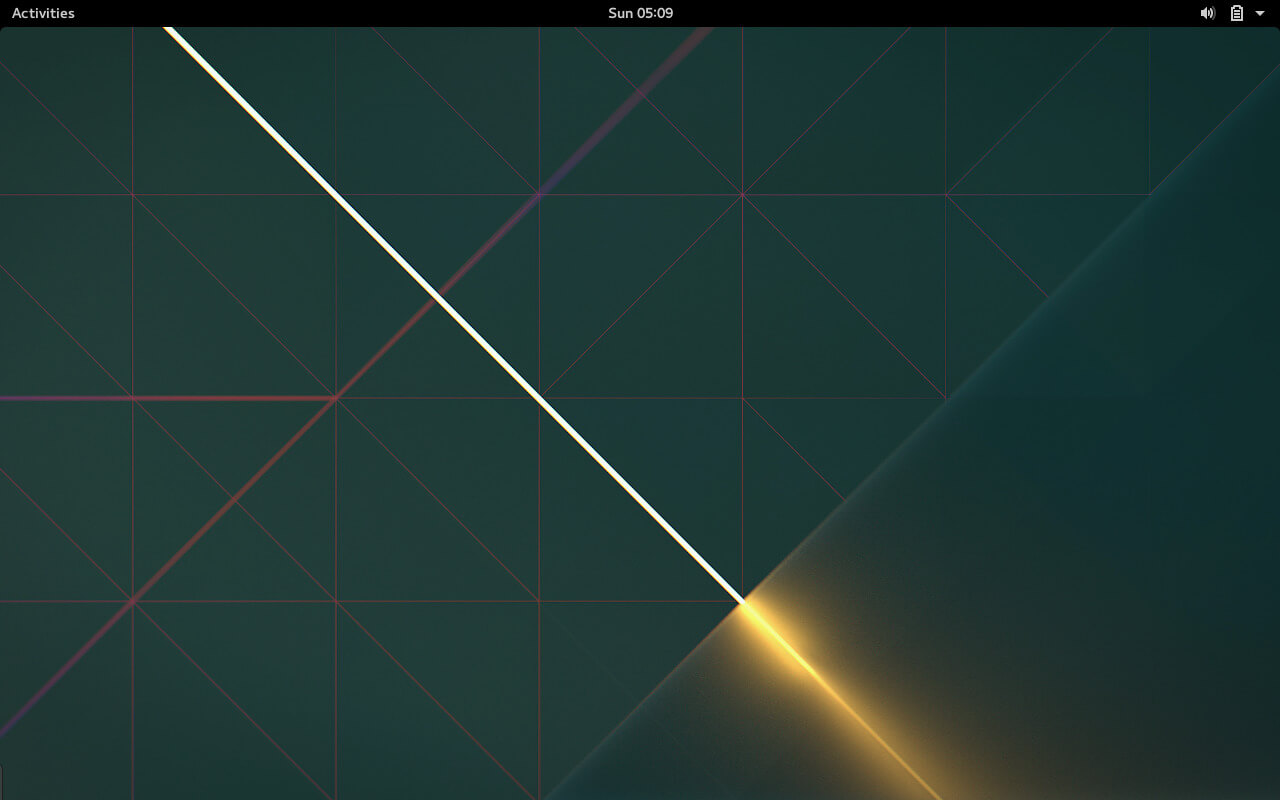
5. Manjaro
Manjaro, an Arch Linux-based distribution experienced remarkable growth during 2016. Without a doubt, by leveraging Arch Linux’s robustness and its features, the maintainers of Manjaro have been able to consistently ensure a pleasant experience both for new and experienced Linux users.
If you don’t remember anything else about Manjaro, keep in mind that it comes with preinstalled desktop environments, graphical applications (including a software center), and multimedia codecs to play audio and videos.
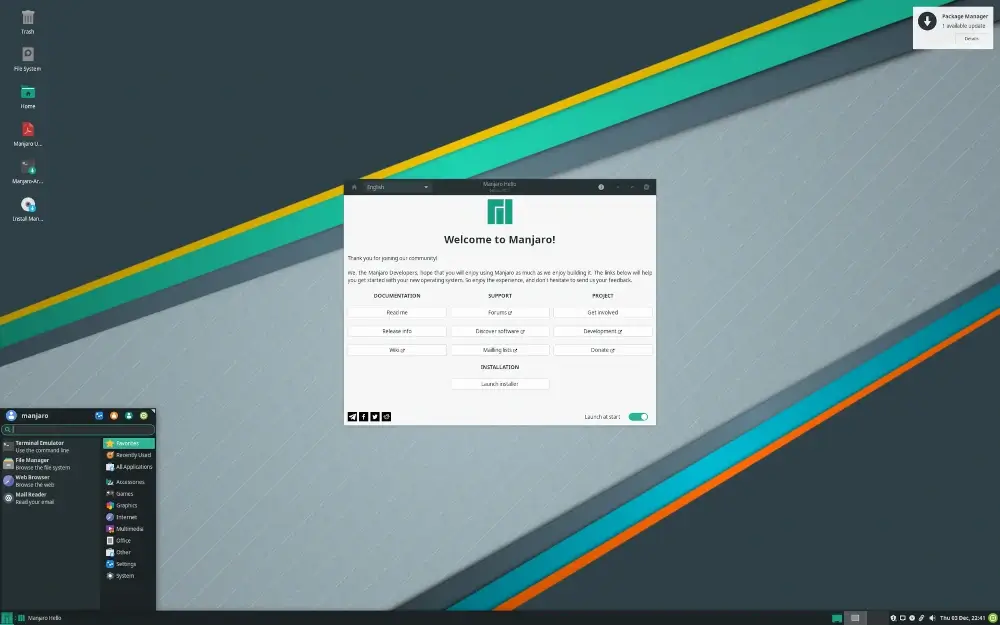
4. openSUSE
Along with Ubuntu, OpenSUSE is one of the cost-free alternatives to the enterprise king (Red Hat Enterprise Linux). On top of that, OpenSUSE is (as per its developers) the operating system of choice for both new users and geeks alike (you may agree or not, but that’s what they say).
On top of all that, the renowned and award-winning SUSE Linux Enterprise products are based on OpenSUSE. A new version of openSUSE Leap 15.5 was released last year.
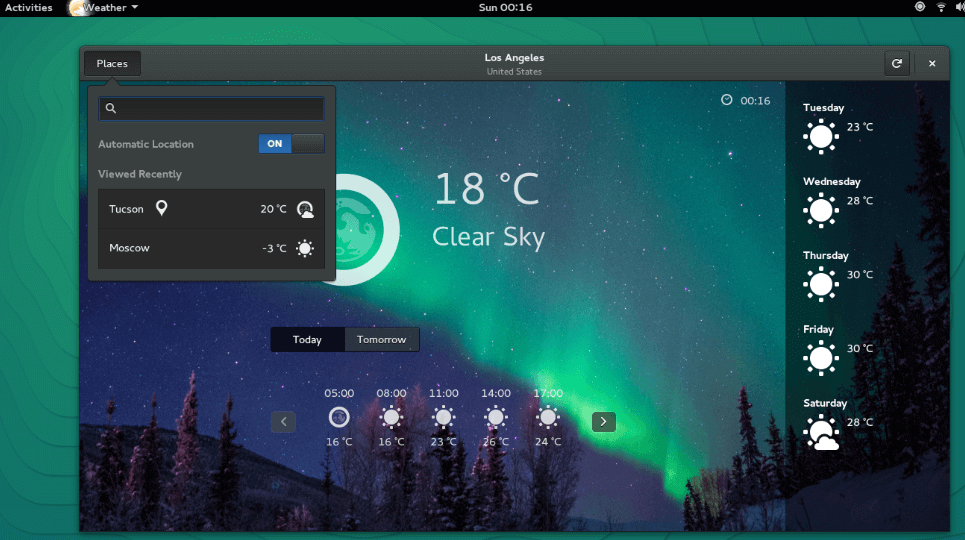
3. Ubuntu
For those individuals and companies who require professional support from a distribution creator, Ubuntu stands out. Although professional help is available under a support contract, Ubuntu has a large user base and the community support is outstanding as well.
In addition, Ubuntu is available both in desktop and server editions and is based on Debian, it is also a rock-solid operating system. The Long-Term Support (LTS) editions have guaranteed support for 5 years after their release date.
In addition, you’ll see on this list that several desktop distributions are based on Ubuntu – and that is another reason for its popularity.
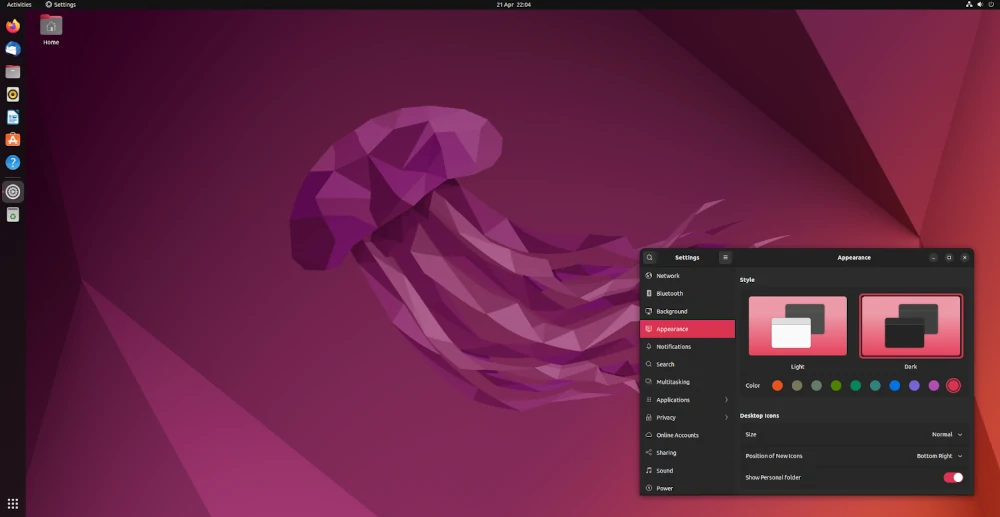
2. Debian
With more than 30 years in the Linux ecosystem, Debian stands out for its robustness, stability, and well-oiled release cycle. In addition, it is the distribution with the largest number of available packages and one of the top choices for servers.
The current stable release (version 12.5, codename bookworm) will be replaced by Debian 13 (codename trixie) around mid-2025. There are no signs of Debian reverting back to the old SysVinit as the default system and process manager.
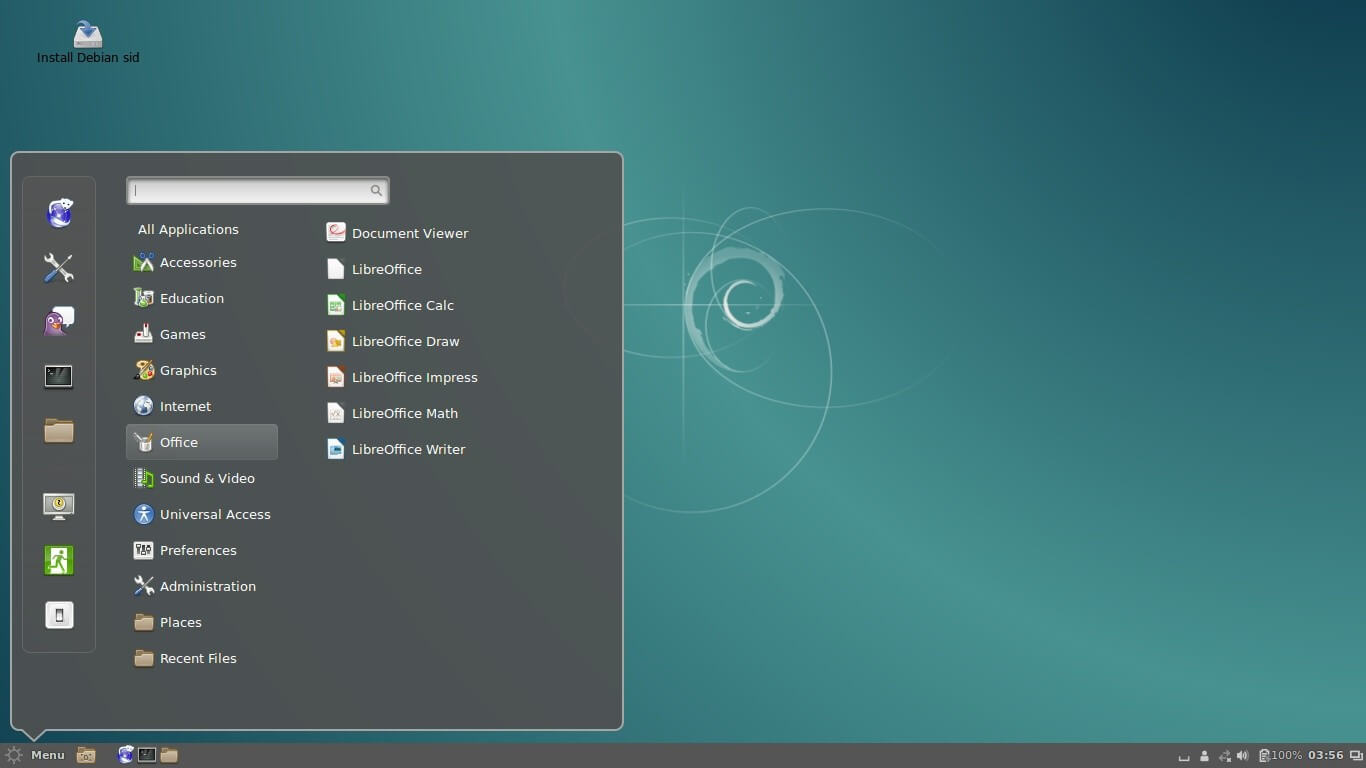
1. Linux Mint
Linux Mint is a stable, robust, and elegant Ubuntu-based distribution. One of the reasons behind its popularity is the fact that up until version 20.x it included out of the box a lot of useful software (such as multimedia codecs).
However, this ended with version 21, leaving it up to the users to install those packages after the operating system is up and running. To make it clear – it’s not that Linux Mint has discontinued support for multimedia codecs and other software it shipped with up until not too long ago.
The reason behind this decision is simple: shipping codecs did not significantly improve the distribution and it meant a great deal of work on the developers’ side.
It is precise because of this that Linux Mint often is the preferred distribution of both new and experienced users – a complete operating system ready for use after installation.
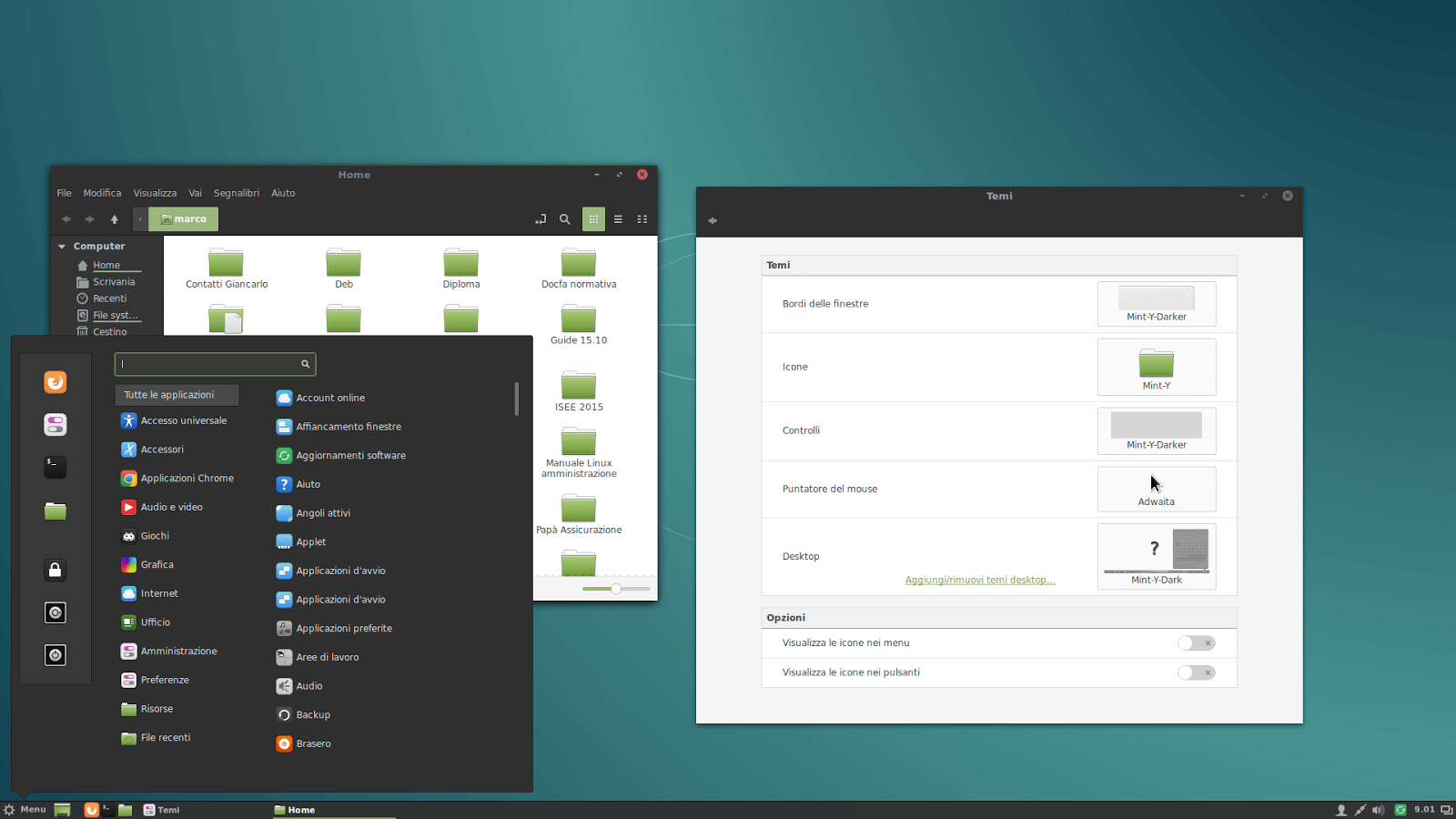
Summary
In this article, we have shared a brief description of the top 10 Linux distributions of all time. Whether you are new to Linux and trying to decide which distro you’ll use to start your journey, or are a well-seasoned user wanting to explore new options, we hope this guide will allow you to make an informed decision.
I encourage you to use the comment form below to be a part of the conversation about this article. Your comments, questions, and feedback are welcome on Tecmint.com.







“10 Most Used Linux Distributions of All Time”
Based on what methodology? One writer’s favorites?
IF this list is of “Most used distros of ALL time” then there are a distros that are missing and a distros that should not be on this list. OTOH, if this is the usual haphazard list of author’s favorites, the it is mis-titled.
Arch, for one, should not be on this list because, since its first release, it has rarely been in the Top 50 of DistroWatch Page Hit Rankings, let alone in the Top 10.
To all those posters who are questioning “Why MY favorite distro has not been included in this list”, read them the title “…. of ALL time”. That means going back to when the first Linux distro was released some 30 years ago. I’m sure that Kubuntu, Lubuntu, PCLinuxOS, etc are fine distros but they have not been around long enough to qualify for this list.
BTW – DistroWatch staff has repeatedly stated that their Page Hit Rankings have ABSOLUTELY NO statistical value. The page hit totals are posted for their entertainment value
@dragonmouth,
Hello,
I appreciate your critical perspective on the article titled “10 Most Used Linux Distributions of All Time.” Your observation about the methodology is valid. It’s crucial to clarify whether the list is based on objective criteria, such as usage statistics, or if it reflects the personal preferences of the author.
The inclusion of Arch Linux is questioned based on DistroWatch Page Hit Rankings, and you’ve rightly pointed out the potential discrepancy. Additionally, your reminder about the historical context of Linux distributions is essential for a comprehensive understanding.
Your comment regarding newer distributions like Kubuntu, Lubuntu, and PCLinuxOS is also noteworthy, emphasizing the need for a clear definition of the timeframe for the term “of ALL time.”
Thank you for highlighting the limitations of using DistroWatch Page Hit Rankings and providing valuable context to the discussion
You wouldn’t believe the number of Distro’s I have downloaded, tried to get to work, or installed to a USB drive only to decide they are not for me. I am sure I am not alone in that. Those all count on the DistroWatch hit page, but were never used.
There are also Distros going back to the old days, like Ubuntu where the CD came in a Tech magazine, or like my first Linux Distro, Xandros, you had to send for the CD. Some still buy a USB Drive with the Distro installed. So one download could have hundreds of USB’s to install and use the Distro.
Therefore it is almost impossible to say which ones are the favorites, Better to say the most downloaded!
@James,
I totally get it! Trying out different distros is part of the Linux journey for many of us. It’s all about finding the right fit. And you’re right, the number of downloads doesn’t always reflect actual usage.
It’s a diverse community with varied preferences!
1) It’s paintfull that you require people to scroll way down to the bottom just to add a comment!
2) Fedora isn’t about “it’s always in the lead of integrating new package versions and technologies”, that goes to all rolling distributions. Fedora sits on my laptop because they are the most professional FOSS Linux distro out there with amazing organisation and decision making throughout. To be effectively backed by Red Hat engineers who bring more innovation to Linux then any other single entity is what Fedora is all about!
3) You provide absolutely ZERO evidence backing up your claim about these being the most used distro’s. In fact I bet Ubuntu is installed on more servers around the world then Linux Mint is on home desktops/laptops. Probably the same for Red Hat too. So your list is utter bollox tbqfh.
@getreal,
Hey there,
I get it; scrolling down for comments can be a bit of a pain. We’re always looking for ways to improve the user experience, so thanks for sharing your thoughts on that.
Totally agree with your perspective on Fedora. The professionalism and decision-making at Fedora, not to mention the innovation from Red Hat engineers, make it stand out. It’s more than just keeping up with new package versions; it’s about setting standards in the world of open-source.
Your skepticism about the most used distros is valid. Concrete evidence would make the claim more credible. Ubuntu’s server dominance and Red Hat’s enterprise presence might indeed outweigh Mint on home systems. Let’s keep the discussion open and explore the facts.
Thanks for engaging in the conversation!
Manjaro takes the lead for me and after that comes Arch and Debian.
Manjaro is such a great OS!
I chose it on my Laptop because I couldn’t get Arch to boot at all!
Anyways. I am also having a Steam Deck with SteamOS and I am using Arch on my Desktop PC.
I made it a challenge not to switch because of all the software available on Linux that I used on Windows.
The only time I need to switch is when I want to play a MMO like Black Desert that has a bad Anti-Cheat.
My personal favorite is Debian and then Arch.
I see in the Material and comments in general that:
1st Mint
2nd POP os
3rd Ubuntu
so I’m going to start in the Linux world using and testing Mint.
Mint, Ubuntu, Zorin, and Elementary are all Debian at their core. I use Ubuntu Mate, but would still say Debian is the best of all time because of that fact. That is different from what is best for new users.
Linux Mint (which I use) comes out at #1 – and the company producing the article is called Tecmint. Interesting.
I don’t have the numbers at hand but you didn’t post metrics either so it’s hard to say if any of the “missing” distros truly hold a place in this list. That said, I’m thinking since over 30 million Raspberry Pi computers have been sold as of 2020, at least 90% of them are running Raspbian/Raspberry Pi OS, that it probably deserves a place in the list.
Again, Debian at it’s core.
Metric for Desktop Distro usage are always subject to a bit of error and guesswork. Would be interested as to how these figures were obtained. Looking at google searches/trends, or Reddit categories, you will find more Linux users use Ubuntu than any of the others you have mentioned, and there is greater support available for Ubuntu.
I’m a total newbie in the Linux world and I just bought a cheap notebook to run some distros.
I tried Elementary (graphically pleasant but not very complete nor totally user friendly) and I’m now running POP OS. I find this distro absolutely amazing, easy to use, extremely complete, and customizable. I’m surprised it is not on the list :)
I have tried Ubuntu, Lubuntu, Kubuntu, Zorin and finally stopped at Mint. Now Mint runs on all my home PCs. Why? It’s user friendly, stable, has good support and good Ukrainian localisation, has all software which I need right off the box.
@Wadym,
No doubt, Mint beats all other Ubuntu variants, Mint is one of the best stable and fast OS, I am using it since last 6 years, without any issues..
Most users stand for a certain distro such as Mint, Manjaro, etc., as they were defending a sports team.
Most gnu/Linux desktop distros are stable, good looking, it is more a question of personal preference. What sometimes is not as stable as it should, is the software that runs within the distro and on the top of it.
Martins,
I fully agree with your comments.
@Wadym,
I am an Ubuntu user, but I agree that Mint is more user-friendly, especially for the novice and those coming from the Windows world. Ubuntu suits my needs better because I am a developer, and Ubuntu is more productive for development purposes. Mint changes version every six months, while Ubuntu LTS every two years, which is very important to me.
I have used kali linux, amazed to see that it does not find a place in top 10 list.
yes thats missing
`
I see Linux Mint taking up the first position in many top distro list. Is it so good? And Arch Linux not suitable for beginners?
@Jason,
Arch is not suitable for beginners. And yes, Linux Mint (Cinnamon) is one of the best, if not the best, distribution for beginners. When you get more proficient, you can step up to Ubuntu or, why not, stay with Linux Mint.
You should have mentioned Kubuntu in a passing reference, at least (as it always happens, someone often disagrees with the list).
I am currently a KUbuntu 20.04 LTS user on all my machines (except the RPIs which run PI OS). I too found Mint (as it is an LTS) and liked it, but when I moved to the first AMD Ryzen processors back when the support wasn’t there in Mint, so moved to Kubuntu and just stuck with it.
I’ve found it very nice and stable for what I do. Note before Mint, I was a long-time Red Hat and Fedora user but wanted an LTS — hence first move to Mint. Windows free for years now.
My hard disk is field. so, windows ms office file and game run on pen drive or ssd card same as Linux software based to use?
I love Deepin most, a Distribution in China, you’ll love it after you try it.
Thank you for the article, but it seems like the section on openSUSE is a bit rushed / incomplete. openSUSE has Leap, which is a stable distribution closely linked to SLES, and Tumbleweed, which is as a rolling distribution receives updates on essentially a daily basis.
The article states “No new versions were released during this year”, but even distrowatch.com, which was apparently the source of the list, shows openSUSE Leap 42.2 was released 2016-11-16.
If you’ve not spent any time with openSUSE, it’s really a great distribution that’s worth checking out more thoroughly.
Why do you always use DistroWatch as source? I do not think this is reliable source. It gives enough information to select a distribution but to measure how popular it is… Why not create a poll where people to vote (results will be primary from your readers but it is something).
For me personally this is not accurate statistic.
We use Distrowatch because it is the best source of information about Linux distributions out there. Of course we could create a poll but that would only represent the use among our readers. If you know about any other source feel free to let us know.
> Of course we could create a poll but that would only represent the use among our readers.
So instead of representing one website you chose to represent a different website that suffers from exactly the same issue yet present as if it was foundational statistics.
How do you not see the conflict in that statement?
Hello.
I would like to point out that Linux Mint 18 Sara is based on Ubuntu 16.04 instead of the reported above 14.04.
For instance, on the download page you can see that Mint 18 Sara is supported until April 2021, like Serena 18.1, and Ubuntu 16.04.
I decided to try Linux in the summer of 2015 when I lost my windows key as a result of a virus attack. Although a corporate friend provided me with a new Windows 10 key at no charge, I installed Windows 10 alongside Linux Mint 17.x with the dual boot method.
Mint was love at first sight. Since then I have booted Windows a couple of times just to do the updates; I do not remember when it was last time. Now I am running Linux Mint 18.1 Cinnamon edition. I think it is the best OS for desktop & laptop computers.
I use Debian for my private server system and definitely can agree with the author as regards its robustness. On my LAN-connected Laptop I have been a loyal user of Mint/KDE.
Unfortunately – up to now – Mint 18/KDE still seems to be somewhat “wobbly”, so I am forced to stay with 17.3, a rock-solid distribution. I do hope that the discouraging state of KDE 5.8 in Mint 18 will be taking care of soon…
MX 15 with xfce desktop is the best, you can get mx15 via antix at distrowatch.
Plus it is super easy to add KDE desktop so I just switch back and forth between the two desktops as I want
I like to play with new software so I often run into stability problems. After repeated problems with Mint (specifically, the v17 upgrade) I switched to Majaro an haven’t run into any problems yet that haven’t been easily solved.
But what really converted me to being a Manjaro fan is that it is the first distribution were I have succeeded at doing a complete, wipe-the-system-partition reinstall without losing *any* of my basic settings.
Everything was saved in my separate user directory under /home, which I didn’t repartition. Everything else I’ve used seemed to save settings all over the place, including directories like /opt . I did save some /etc files separately but still… And I’ve never worked with a distribution as stable as Manjaro.
Plus, when the Manjaro wiki doesn’t help solve a problem, the Arch wiki or forums almost always do. Sorry, Arch fans – having failed twice to get a workable install of Arch and peering, in my mid-70s, at a looming personal EOL, Manjaro did the hard work for me. At least I have donated to Arch in appreciation of the hard work they do (and the support I’ve gotten from their wiki when I needed it).
@TJ, I am glad you are having a successful time with using Manjaro. I personally don’t like Manjaro but to each their own. I would like to address certain things you said in your comment though.
> Everything was saved in my separate user directory under /home
This is the standard action done by all Linux distributions. You do not have to repartition anything in order for settings to be placed in /home, that is where they are suppose to go. Manjaro probably automatically partitions it that way during install so that would explain the lack of backups approach.
Antergos offers this feature as well during installation. I’m not saying you should switch but just that Manjaro is not unique in that set up.
> Everything else I’ve used seemed to save settings all over the place, including directories like /opt .
All applications that are using the package manager properly place their settings and everything in /home because that is where it is suppose to be. However, there are some applications like Google Chrome that purposefully put everything in /opt but that is the app doing it not the distro.
> At least I have donated to Arch in appreciation of the hard work they do (and the support I’ve gotten from their wiki when I needed it).
That’s great to hear and I appreciate your willingness to support the base distro of what you are using. After all, Manjaro wouldn’t exist without Arch. :)
Mint no longer provide media codecs ootb. Low effort article.
OpenSUSE released no new version this year? Check your facts, please. Or else explain why you consider LEAP 42.2 no new version. And please do better in explaining why openSUSE is on number 4. The text you put there feels a bit underestimated.
Yup. Linux Mint does it again. I do wonder, however, if the Linux Mint project might fade out in favor of keeping Cinnamon alive for use on other base distros.
lol noobs.
Well, maybe check the statement that no new OpenSuse version was released this year (Hint: Leap 42.2 ….coughnovembercough)
This article is so bad that I wish I could avoid commenting but most of the information here is wrong so publishing it is irresponsible and therefore ignoring it is irresponsible.
In this article we will review the 10 Linux distributions with most hits during the last 12 months as per Distrowatch, and discuss the reasons behind their popularity.
A note for new users: Distrowatch.com has been a reliable source of information about Linux distributions since 2001.
The first sign that this article is just bad. Distrowatch does NOT track popularity of Linux distributions it tracks the popularity of these distros’ activity ON the distrowatch website. If you are a user but have never visited DistroWatch then your usage is not counted ever.
DistroWatch is good for looking and Trending distros but nothing else in terms of usage or popularity.
Arch is not recommended for new users mostly because the installation process is a bit complicated in that it will require a great deal of intervention on the user’s part.
It’s not an intervention . . . it is a manual installation by design. Also it is not just the installation, the Rolling Release nature of the distro is the biggest reason it should not be recommended.
> Its desktop version is not as popular but continues to improve its visual appearance year after year.
What desktop version? You mean the singular ISO that is for servers that some people put on workstations because it is not solely headless? So, the Server version that has a GUI.
> In addition, its robustness, stability, and 100% binary compatibility with RHEL makes CentOS the number one alternative to Red Hat Enterprise Linux on cloud VPS vendors.
Or makes it the companion to RHEL for a stepping stone to using RHEL if someone were to want to do that since both are owned by Red Hat.
——
I can basically pick a part each section of this article because you do so little research but I will skip to the “#1” distro. As described previously, DistroWatch does not define what is or is not popular.
> One of the reasons behind its popularity is the fact that Mint includes Java, provides browser plugins, media codecs, and support for DVD playback out of the box.
Well except for the fact that Linux Mint 18 stopped including codecs and all the other proprietary stuff they used to due to legal ramifications and effort involved with managing these different versions. So nope.
> It is precisely because of this that Linux Mint often is the preferred distribution of both new and experienced users – a complete operating system ready for use after installation.
Again, nope.
> During 2016, 3 releases came out: 17.3 (Rosa), 18 (Sarah), and 18.1 (Serena), based on Ubuntu 14.04 (Rosa and Sarah) and 16.04 (Serena).
Wow! How the crap did you mess this one up so bad? I mean Wikipedia could give you all the information for this.
17.3 was released in December of 2015. (the extra XFCE and KDE spins are NOT the main releases for 17.3)
18.0 aka Sarah was NOT based on 14.04 but rather 16.04.
18.1 is a point release of 18.x so why would you think that they would be such massively different cores?
———
Please, just do some research before publishing something.
Thank you for taking the time to write such a thorough comment. I appreciate you pointing out the inaccurate info and will keep it in mind while revising the article. However, you don’t have to go that hard on us – there is no need to use strong words such as “so bad”, “irresponsible”, “crap”. You could have just pointed out the facts in a more polite way, don’t you think?
> I appreciate you pointing out the inaccurate info and will keep it in mind while revising the article.
Welcome.
> However, you don’t have to go that hard on us – there is no need to use strong words such as “so bad”, “irresponsible”, “crap”.
I do actually have to be hard on you if that motivates you to put effort into your articles to be accurate. The examples I provided are just glaring problems that I was willing to comment on due to just skimming the article. It was so bad because you were irresponsible in not researching your article because a lot of this stuff is wrong with no real reason to be. I mean the base of what Linux Mint 18 vs 18.1, there is no excuse to be wrong on that because 1.) Wikipedia has the info. 2.) why would you think a point release of the same major version would switch the entire core in such a large way?
I didn’t mention the fact that you claimed openSUSE didn’t have a release in 2016 when it in fact did. Other commenters pointed that out . . . maybe that should be motivation to actually research what you are writing about.
By the way, you were also not attentive in my comment because I didn’t call the article crap as you inferred. I said “how the crap” which just uses the word in a general sense.
> You could have just pointed out the facts in a more polite way, don’t you think?
Yes, I probably could have. However, you could have researched the article before publishing it so there’s that.
A magazine article is not a scientific journal article. So, precision is not foremost in articles like this. I like this article because it is informative, enjoyable and easy to read and understand. I completely dislike the sarcastic and impolite style of your comments.
> A magazine article is not a scientific journal article. So, precision is not foremost in articles like this.
That just doesn’t make sense to me . . . so it doesn’t matter to you if what you read has any accuracy?
> I like this article because it is informative, enjoyable and easy to read and understand.
It is “informative”? How is spreading misinformation “informative”? It is telling you things, in fact many things, that are simply not true and are easily researched beforehand. At best, this article is a result of laziness . . . at worst, apathy.
> I completely dislike the sarcastic and impolite style of your comments.
I don’t mind that you dislike my approach to informing the author of their plethora of needless mistakes. I dislike that websites publish such flawed and blatantly error riddled articles.
I respect your freedom to tell me of your opinion and I am fine with expressing my to authors and websites who publish content that is spreading needless misinformation.
“so it doesn’t matter to you if what you read has any accuracy?”
It does. Depending on how much accuracy I need, I consult the appropriate sources of information. For example, when I need precise information on the C function “fork” (because I am writing a program), I use the official GNU documentation. To see, in general, what this function does, I would read something like this article.
For Arch Linux newcorners use Antergos.
Why are there comments listed beneath this article from years ago?
@Pipo,
Great observation!
Our article undergoes updates every six months to ensure the information stays current. However, comments from previous years are retained to capture a diverse range of perspectives and experiences shared by our community over time. Your thoughts and questions are always welcome!
It saddens me (but doesn’t surprise me) that PCLinuxOS didn’t make the list. It was IMO the best desktop distro for a long time. But it just never got the traction needed to keep growing. I was reluctantly forced to move to Kubuntu (I’m a KDE fan) to get the tools I need.
I’m surprised OpenSUSE is all around, let alone top ten. In my mind, they’re permanently tainted by association with Novell and their attack on Linux (at Microsoft’s behest).
> I’m surprised OpenSUSE is all around, let alone top ten.
This list is incredibly flawed just in general but openSUSE made a LOT of changes and improved drastically in 2016. openSUSE deserves to be on the list regardless of the overall invalidity of this article.
> In my mind, they’re permanently tainted by association with Novell and their attack on Linux (at Microsoft’s behest).
Their attack on Linux? That’s the first time I’ve heard such a thing so please elaborate on that claim, if you’d be so kind.
I moved to Linux Mint after years of trying to stay on Ubuntu while avoiding the Unity desktop (I just don’t “get it”). I’m glad Mint is #1, since they seem to “get” users like me – definitely easy to install, easy to customize, easy to keep current, etc. I’m at the age where “hassle-free easy” is the #1 requirement (great security is important, and also easy on Linux!).
Small error in your article – Linux Mint “Sarah” is based on Ubunut 16.04 LTS, not 14.04 (see https://goo.gl/4ni1l1 ). Linux Mint version numbers now track Ubuntu’s LTS releases, with the .1, .2, etc., releases still based in the Ubuntu LTS version. As great as Ubuntu is, Mint has a better system. I’ve only installed LTS versions of Ubuntu since 8.04, and the folks at Mint understand this…
Did you do based on 2016 distro watch ranking? elementary OS is in top 5 and the screenshot is quite old and misleading.
Manjaro,, enjoy the simplicity